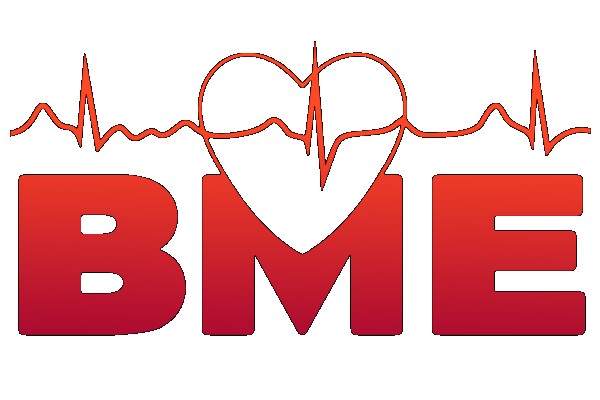Lectures:
1. Physiological principles.
2. System definition, basic division, basic concepts, feedback, system description, mathematical apparatus.
3. Modeling of biological systems, modeling procedure, Models of static systems, models of dynamic systems, stochastic models of biological systems, basic attributes of systems.
4. Human organism as a system - basic properties of the organism, principles of homeostatic control, control mechanisms, stimuli, structure of the biological system, receptors, homeostatic regulation, thermoregulation
5. Biological membranes. Structure and Functions. Chemical potentials. Conditions of equilibrium in heterogeneous systems. Membrane ion channels. Transporter ion transfer systems via membrane.
6. Neurophysiology - nervous system. Transmission and processing of information in biological systems. The nervous, hormonal and humoral level of their management.
7. Nervous System Structure of the nervous system, possibilities of control at individual levels. Central nervous system. Nerve fiber, replacement scheme, and propellant propagation equation.
8. Heart. Heart activity and importance of control mechanisms under load. The vascular system. The importance of the bloodstream for circulation, the possibilities and the importance of its regulation.
9. Heart Rate Control, Blood Pressure Stabilization
10. Breathing system. Control of the respiratory system. Function of the lung and its regulation in extreme conditions. Breath regulation
11. Motion system. The link between electrical irritation and the mechanical response of the muscle cell. Reflections.
12. Water regulation in the organism, regulation of glycemia, pharmacokinetics
13. Replacement of organ functions. Replacement and support of the function of the internal organs. Replacement of kidney, heart and lung function.
14. Stimulators external and implantable.
Laboratory Exercises:
1. Introduction to the theory of ordinary differential equations: ODR I., II. order and their systems, general and particular solutions, Cauchy task and Laplace transformation.
2. The solution of ordinary differential equations in Simulink. Numerical solvers of differential equations in MATLAB environment.
3. Analytical solution and simulation of population models.
4. Pharmacokinetics: one compartment and two compartment model of drug passage.
5. Analysis and simulation of heart rate dependence on physical load.
6. Modeling of kidney function in stabilizing blood pressure.
7. Pulse compartment: model of gas concentration in alveoli and other tissues.
8. Gastric acidity control model.
9. Model of enzyme reaction and membrane potential.
10. Model Baroreflex.
11. Pulse model of blood circulation.
12. Model of glycemic control.
13. Modeling of skeletal muscle contraction.
14. Fundamentals of PDE and their application in biomedical modeling.
1. Physiological principles.
2. System definition, basic division, basic concepts, feedback, system description, mathematical apparatus.
3. Modeling of biological systems, modeling procedure, Models of static systems, models of dynamic systems, stochastic models of biological systems, basic attributes of systems.
4. Human organism as a system - basic properties of the organism, principles of homeostatic control, control mechanisms, stimuli, structure of the biological system, receptors, homeostatic regulation, thermoregulation
5. Biological membranes. Structure and Functions. Chemical potentials. Conditions of equilibrium in heterogeneous systems. Membrane ion channels. Transporter ion transfer systems via membrane.
6. Neurophysiology - nervous system. Transmission and processing of information in biological systems. The nervous, hormonal and humoral level of their management.
7. Nervous System Structure of the nervous system, possibilities of control at individual levels. Central nervous system. Nerve fiber, replacement scheme, and propellant propagation equation.
8. Heart. Heart activity and importance of control mechanisms under load. The vascular system. The importance of the bloodstream for circulation, the possibilities and the importance of its regulation.
9. Heart Rate Control, Blood Pressure Stabilization
10. Breathing system. Control of the respiratory system. Function of the lung and its regulation in extreme conditions. Breath regulation
11. Motion system. The link between electrical irritation and the mechanical response of the muscle cell. Reflections.
12. Water regulation in the organism, regulation of glycemia, pharmacokinetics
13. Replacement of organ functions. Replacement and support of the function of the internal organs. Replacement of kidney, heart and lung function.
14. Stimulators external and implantable.
Laboratory Exercises:
1. Introduction to the theory of ordinary differential equations: ODR I., II. order and their systems, general and particular solutions, Cauchy task and Laplace transformation.
2. The solution of ordinary differential equations in Simulink. Numerical solvers of differential equations in MATLAB environment.
3. Analytical solution and simulation of population models.
4. Pharmacokinetics: one compartment and two compartment model of drug passage.
5. Analysis and simulation of heart rate dependence on physical load.
6. Modeling of kidney function in stabilizing blood pressure.
7. Pulse compartment: model of gas concentration in alveoli and other tissues.
8. Gastric acidity control model.
9. Model of enzyme reaction and membrane potential.
10. Model Baroreflex.
11. Pulse model of blood circulation.
12. Model of glycemic control.
13. Modeling of skeletal muscle contraction.
14. Fundamentals of PDE and their application in biomedical modeling.
